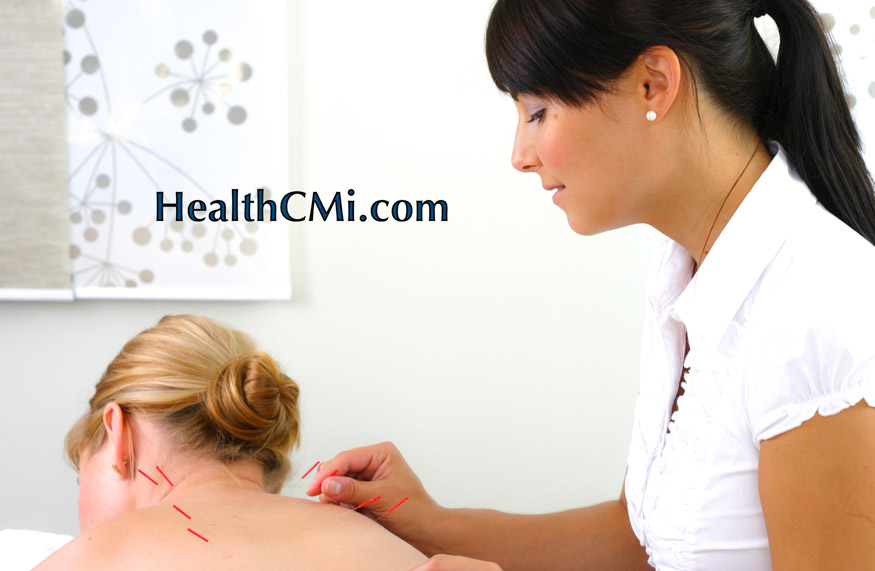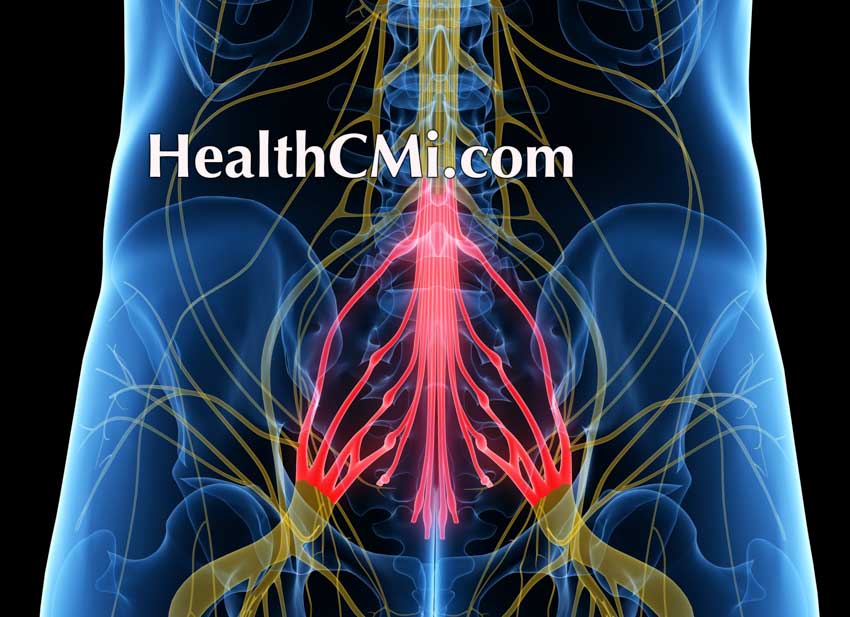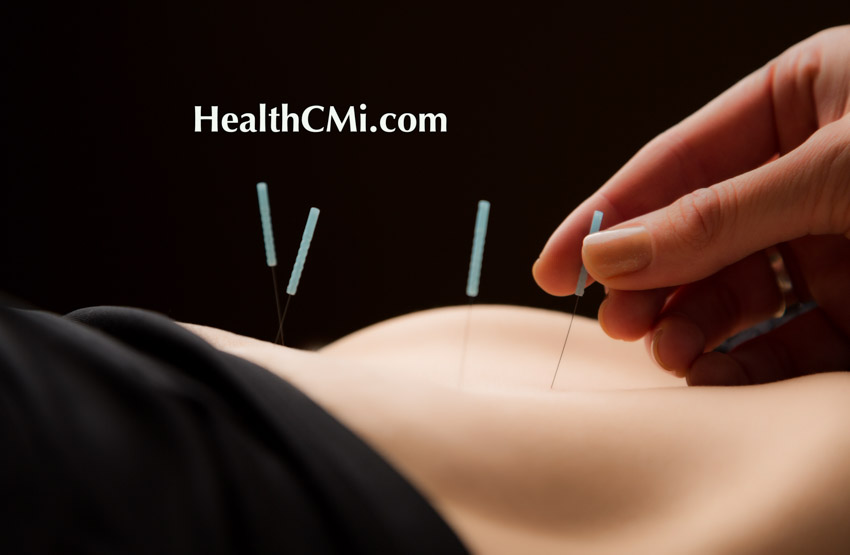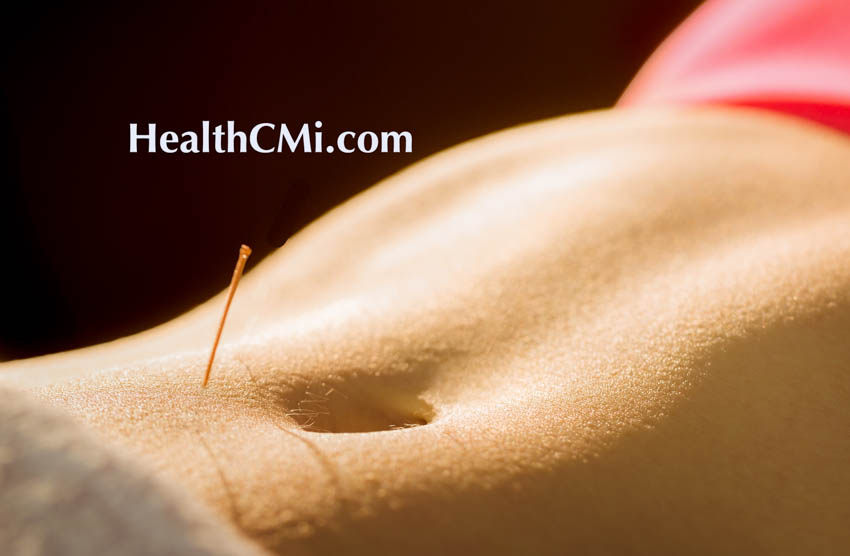
Acupuncture research reveals major findings this year. From the treatment of sciatica to relief of pain due to uterine adhesions, the research shows the effectiveness of acupuncture for the treatment of many disorders. We cover a few of the most recent major findings that demonstrate the effectiveness of specific acupuncture points for specific conditions in this article.
First, a few updates in the world of licensed acupuncturists. The NCCAOM has indefinitely extended online CPR PDA/CEU course credits. This changes a prior ruling that requires in-person attendance for follow-up CPR training. HealthCMi.com offers several valuable online CPR courses presented by CPR experts. Also in the news, the California Acupuncture Board now has much of its recertification process for licensed acupuncturists online. The same is true for the Illinois Board of Acupuncture and several other certifying bodies.
Sciatica in the News
Electroacupuncture is effective for sciatica relief. In a recent study from Henan Hospital of Traditional Chinese Medicine, researchers learned that applying electroacupuncture to GB30 (Huantiao) and GB34 (Yanglingquan) alleviates pain, inhibits inflammation, and improves nerve conduction velocity more effectively than a standard manual acupuncture protocol. [1] Learn more about the treatment of sciatica and low back pain in the HealthCMi course entitled Low Back Pain >

Observational indicators used in the clinical trial include the McGill pain index for pain levels, serum IL-6, TNF-α, and MCP-1 for inflammation parameters, motor nerve conduction velocity (MCV) measurements at the tibial nerve and common fibular nerve, and sensory nerve conduction velocity (SCV) measurements at the superficial peroneal nerve and sural nerve.
Based upon the data collected prior to treatment, both groups experienced improvements above baseline; however, the electroacupuncture group demonstrated greater relief from sciatica after treatment than the manual acupuncture group. The electroacupuncture scores from the pain rating Index (PRI), visual analog scale (VAS) and present pain intensity (PPI) dropped more than the manual control acupuncture group. Figures of proinflammatory IL-6, TNF-α and MCP-1 were at 18.84 ±5.23, 32.37 ±5.37, and 83.26 ±8.36 respectively. These scores are considerably lower than those of the control group which were 27.72 ±5.52, 41.83 ±6.15, and 98.23 ±9.72. Upon completion of the treatment protocols, motor and sensory conduction was better in the electroacupuncture group.
Both groups received the following acupuncture protocols. Patients were in a lateral or supine position. The following acupoints were chosen for manual acupuncture:
- BL40 (Weizhong)
- GB31 (Fengshi)
- BL36 (Chengfu)
- GB41 (Zulinqi)
- GB39 (Xuanzhong)
- BL57(Chengshan)
For Zulinqi and Xuanzhong, needles were inserted perpendicularly up to 15 mm. For Chengshan and Chengfu, needles were perpendicularly inserted up to 40 mm. For Weizhong and Fengshi, needles were perpendicularly inserted up to 30 mm. Practitioners swiftly inserted the needles and applied a mild reinforcing-attenuating manipulation technique. Treatment lasted 30 minutes each session.
Patients in the electroacupuncture group also received the same manual procedure as in the control group above. Upon finishing the regular manual acupuncture, the electroacupuncture patients rested in a supine position for 30 minutes. Next, they received electroacupuncture at GB30 (Huantiao) and GB34 (Yanglingquan). Huantiao was connected to the positive electrode while Yanglingquan was connected to the negative electrode. The practitioners set the device to perform a disperse-dense wave with the slow frequency setting at 2 Hz. Intensity was set according to the patients’ comfort threshold. Treatment time was 30 minutes for the additional procedure.
Patients in both groups underwent four treatment courses, with six consecutive days and a one-day break completing a course. Upon completion of the full treatment course, data collected from the observational indicators demonstrated that the electroacupuncture group received greater results than did the manual acupuncture group. The data confirmes that the additional electroacupuncture treatment significantly improves patient outcomes.
Gynecology in the News
Acupuncture is effective for the treatment of adenomyosis, a disorder characterized by tissue growing into the uterine wall that normally lines the uterus. This endometrial tissue disorder may not produce symptoms or may lead to heavy or prolonged menstrual flow, local pain, or painful intercourse (dyspareunia).

Researchers in Shanghai Yueyang Hospital Affiliated to Shanghai University of Traditional Chinese Medicine and Fudan University Affiliated Maternity Hospital conducted a clinical trial, comparing the efficacy of warm needle acupuncture and that of GnRH-a (gonadotropin releasing hormone) in treating adenomyosis (cold-stagnation, blood-stasis type). The researchers find acupuncture an effective treatment protocol that improves patients’ quality of life. [2]
Observational parameters included uterine volume, a Numerical Rating Scale (NRS) for menstruation pain, a symptom score for menstruation abnormalities, and the Endometriosis Health Profile-5 (EHP-5). For all three parameters, higher scores indicate increased severity. Additionally, serum CA125, luteinizing hormone (LH), follicle-stimulating hormone (FSH), and estradiol (E2) levels were observed and assessed.
The results show that both treatment protocols reduced the uterine growth volume. NRS scores were approximately the same prior to the study (at around 5). After the treatment, patients in the drug control group experienced absence of menstruation. Thus, NRS in this group dropped to zero.
In the warm needle acupuncture group, the figure changed to 2.97 ±2.01. EHP-5 dropped in both groups, with the bigger decline (more improvement) shown in the warm needle acupuncture group (from 33.0 to 17.5). The symptom score for menstruation abnormalities presented a significant increase in the control group, climbing from 1 to 26. By contrast, the figure in the warm needle acupuncture group decreased from 3 to 2 points.
A notable decrease presented in the GnRH-a group (102.17 to 91.76). The decline in the uterine volume in the warm needle acupuncture group was 92.76 to 85.98. The same is true for serum CA125. GnRH-a more significantly down-regulated CA-125, but at the same time, levels of LH, E2 and FSH were significantly reduced with the use of GnRH-a. The decreased LH, E2 and FSH levels could lead to amenorrhea, severely influencing patients’ quality of life. Therefore, researchers consider that using warm needle acupuncture is more advantageous than GnRH-a when accounting for adverse effects. GnRH-a is effective, but has unwanted side effects but the acupuncture did not produce unwanted side effects.
The following outlines the research treatment protocol. Statistical baselines were the same in the 2 groups. Patients’ age range was 36 to 38 years and the course of condition averaged 5 years. In the warm needle acupuncture group, patients first took a supine position. Needles (0.25 mm × 40 mm) were sterilized and perpendicularly inserted to a depth of 25 to 35 mm. The following points were used at this stage:
- SP10 (Xuehai)
- ST36 (Zusanli)
- SP8 (Diji)
- SP6 (Sanyinjiao)
- EX-CA1 (Zigongxue)
- CV4 (Guanyuan)
A twisting-twirling manipulation was applied for one minute. Then, moxa (20 × 25 mm) was connected to the needles at Zusanli, Sanyinjiao, and Guanyuan. This stage lasted for approximately 20 minutes. Next, patients took a prone position. Longer needles (0.30 × 70 mm) were applied at bilateral Ciliao. Needles were inserted into the posterior sacral foramen. Insertion length was 40 to 70 mm. After 20 seconds of manipulation, the needles were removed. Treatment commenced the first week after patients’ menstruation cycle and was conducted twice a week, except during menstruation. In the drug control group, GnRH-a or triptoelin injection (3.75 mg) was administered intramuscularly every 28 days, totaling three doses. The result indicate that both drug monotherapy and acupuncture monotherapy produced significant positive patient outcomes, with acupuncture have the advantage of not producing adverse effects.
Uterine Adhesion Treatments in the News
Acupuncture improves patient outcomes for the treatment of intrauterine adhesions (IUAs). Researchers from the Shanghai University of Traditional Medicine collaborated with Longhua Hospital and Tongji University’s Maternal and Child Care Service Centre investigators in a clinical trial. They compared IUA treatments and discovered that the addition of acupuncture and moxibustion significantly improves patient outcomes for patients receiving standard care.
This two-arm investigation compared standard care and standard care plus acupuncture and moxibustion. Standard care consisted of transcervical resection of adhesions (TCRA) and sequential hormone replacement therapy (HRT).
TCRA is a medial procedure wherein a surgeon removes adhesions. HRT involved supplementation with estrogen and progestin. The results show that the addition of acupuncture and moxibustion improves patient outcomes and also improves endometrial thickness parameters and blood flow. [1] Acupuncture and moxibustion improved the total efficacy rate by 16%.
Intrauterine adhesions (i.e. IUAs, Asherman’s syndrome) is the bonding of scar tissue lining of the uterus. This results in decreased uterine cavity volume. Causes include infections of the endometrium (i.e. membrane lining the uterus) or adverse effects following a surgical procedure. It may be asymptomatic or include dysmenorrhea, infertility, recurrent miscarriages, complications during delivery, and chronic pelvic pain.
Transcervical resection of adhesions (TCRA) is a standard treatment for IUA in hospital settings, but the recurrence rate is high. Even after the TCRA treatment, some patients continue to experience absent or infrequent periods and complications during pregnancy.
The observational parameters in this trial included three categories:
- IUA levels are determined with hysteroscopy, symptoms are measured using a four-level scoring system, the higher score signifies more severe symptoms.
- Blood flow is measured using both the resistance Index (RI) and the perfusion index (PI).
- Laboratory data: white blood cell count (WBC), prothrombin time (PT), activated partial thromboplastin time (APTT), thrombin time (TT), tumor necrosis factor-α, (TNF-α), interleukin-6 (IL-6), fibrinogen (FIB), transforming growth factor-β (TGF-β), vascular endothelial growth factor (VEGF).
The total efficacy measurement was assessed based on three categories:
- Significantly effective: normal menstruation, normal appearance of the uterine cavity, smooth endometrial surface, bilateral uterine horns of the fallopian tubes clearly visible
- Effective results: increase in menstrual volume when compared with menstrual volume prior to surgery (but remain lower than normal blood flow), near-normal appearance of the uterine cavity, slight adhesions visible
- Ineffective: no significant observable improvement
Based on the above criteria, the overall efficacy rate in the standard therapy control group was a 76%, versus 92% in the acupuncture and moxibustion integrative treatment group. All observational parameters presented improvements in the two groups, with more significant changes shown in the integrative treatment group when acupuncture and moxibustion were administered.
The study used a sample of 100 IUA cases admitted to the center. The 100 cases were randomized into a standard therapy control group receiving TCRA plus HRT, and an acupuncture and moxibustion integrative treatment group, receiving acupuncture and moxibustion in addition to TCRA and HRT. Statistical baselines were the same before treatment.
Patients in both groups underwent TCRA procedures followed by HRT for 30 days, completing one treatment session. The entire course of treatment consisted of three sessions.

In addition to receiving the standard HRT, the acupuncture moxibustion integrative treatment group received the following protocol. Practitioners administered acupuncture and moxibustion on alternate days after the fifth day following the first menstruation after the surgery, with ten days completing a treatment session. The entire course of treatment consisted of three sessions.
Patients were advised to urinate before the treatment commenced. A supine position was taken. Sterilized needles (0.25 × 40 mm) were inserted perpendicularly. Insertion length was 10–20 mm. A mild reinforcing-attenuating manipulation method was applied. The following acupoints applied were:
- CV4 (Guanyuan)
- CV6 (Qihai)
- SP10 (Xuehai)
- ST29 (Guilai)
- Extra Point (Zigong)
- ST36 (Zusanli)
- SP6 (Sanyinjiao)
- LV3 (Taichong)
- SP8 (Diji)
Moxa cylinders (2 cm) were connected to the needle ends on Zusanli and Zigong. Acupuncture needles remained in position for 30 minutes prior to removal.
The study demonstrates that when acupuncture and moxibustion are used in conjunction with the standard TCRA and hormonal treatment protocols, patients exhibit observably greater results than patients who solely utilize the standard protocols to alleviate intrauterine adhesions.
References:
[1] Xie Yuchen, Zhao Chi, Xu Hui, Ma Miao, Efficacy Analysis on Treating Sciatica Patients by Applying Electroacupuncture on Huantiao and Yanglingquan, Modern Medicine and Health Research, 2023 Vol.7 No. 4.
[2] Wu Chuting, Li Xinrong, Dong Xiaoyan, Li Mingchang, Hu Jiawei, etc. Efficacy observation of Treating Cold-stagnation and Blood-stasis Type Adenomyosis, Shaihai Journal of Acupuncture, July 2022, Volume 41, Issue 7, DOI:10.13460/j.issn.
[3] Efficacy Observation of Needle-warming Moxibustion Combined with Estrogen and Progestin Sequential Therapy for Intrauterine Adhesion, Ma Juanjuan, Zhang Yijun, PEIJIAN, Wu Sheng Nan, Weng Xiaochen, Shanghai Journal of Acupuncture, November 2022, Volume 44 Issue 11, 1005-0957 (2022) 11-1077-07.


